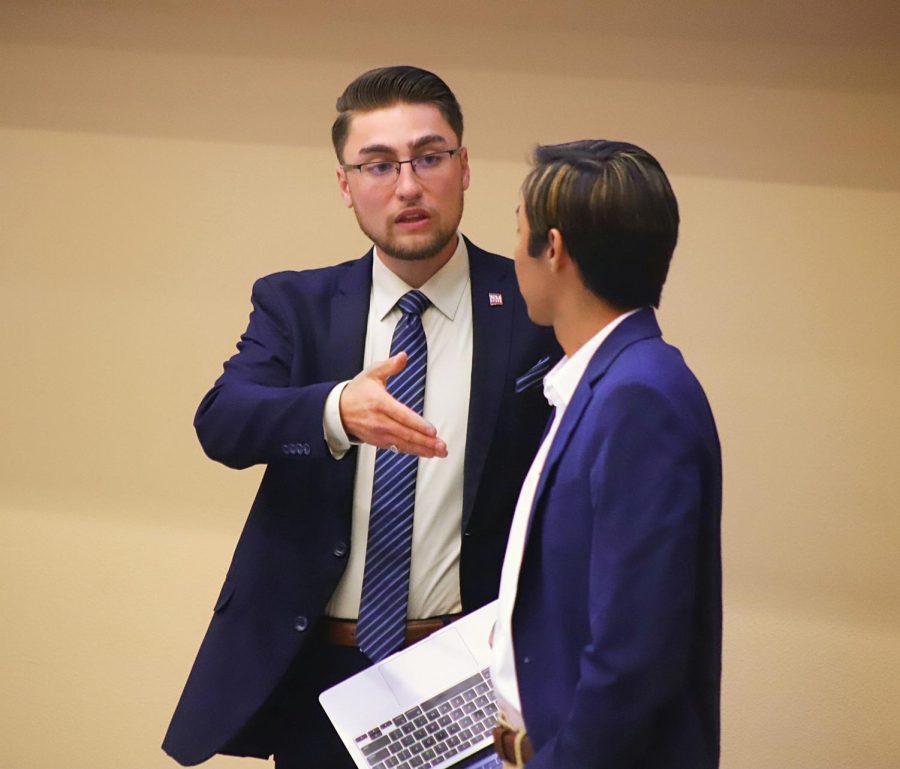By Billy Huntsman
Managing Editor
This is the second installment in The Round Up/Oncore Magazine‘s 14-part series investigating professor turnover at NMSU.
Is it a problem?
How many professors does a public university lose in a given year?
It’s difficult to know for sure. While the breakdown of 136 professors leaving in 13 years is about 10 a year, each professor surely had his or her own unique reasons for leaving the university. Claudia Porras, for example, who left in or after 2012 to Texas Women’s University, told TRU/OM in an email she had left NMSU to Texas Women’s University in order to be closer to her fiancé.
“Although some faculty turnover is unavoidable, and perhaps even desirable, each institution must establish its own acceptable baseline turnover rate,” the 2009-2010 Provost’s Project “Nuestro Corazón: Growing with NMSU” reads.
Intended to be complementary to“A Diamond in the Rough: Faculty Retention at New Mexico State University,” published in November 2008, by Christine Eber, professor emerita in NMSU’s Department of Anthropology at NMSU, in spring 2009 NMSU’s ADVANCE Program conducted focus groups with NMSU professors to get their reasons for staying at NMSU, which were compiled into the 2009-2010 project.
So what is NMSU’s acceptable baseline turnover rate?
From 2005 to 2014, NMSU hired 287 new professors. Approximately 75 percent, or about 215, remained as of 2014, according to NMSU Provost Dan Howard, indicating a 72-professor 10-year loss.
Is this 25 percent turnover rate acceptable?
“I would like it to be less,” says NMSU Provost Dan Howard.
How does this number compare to other universities?
While he had no specific figures for other universities, and in fact there are no national statistics for university faculty turnover rates, Howard said he suspects NMSU’s turnover rates “are comparable to other midsized state universities.”
The closest thing to a national average TRU/OM’s research could turn up was a survey conducted between 2003 and 2010.
The National Science Foundation funded the Survey of Doctorate Recipients. For a seven-year period, the survey followed 4,383 full-time tenured or tenure-track faculty at four-year institutions across the United States, in order to track “faculty mobility.”
In those seven years, “about 81 percent (3,567) faculty stayed in the same institutions,” says Dongbin Kim, Ph.D, associate professor in the Department of Educational Administration at Michigan State University in East Lansing. “Of those who left, 533 faculty members moved to another higher education (institution) but still stayed within academia. The remaining 283 faculty members left academia entirely by moving to industry or business sectors.”
NMSU’s 25-percent turnover rate is higher than the survey’s 19 percent rate, but the survey’s sample is significantly larger than the 287 figure Howard provided.
So is it abnormal for a single university to lose approximately 136 professors, not to retirement, but to other universities, nonacademic positions, or who left without replacement jobs in 13 years?
“It’s really hard for us to track questions like this with much precision for a few reasons,” says Leslie Gonzales, Ed.D., an assistant professor and higher education researcher also at MSU.
First, higher education in the United States has no single governing body “dictating to universities and colleges how to collect their data in similar ways that’s comparable across multiple years,” Gonzales says.
Secondly, the federally funded National Survey of Postsecondary Faculty hasn’t been administered since 2004.
“It was a national study that looked at many factors concerning faculty satisfaction, faculty employment intention, experiences, faculty workload,” Gonzales says.
Because of these reasons, Gonzales says, an average year-by-year count of professors leaving public universities is not available.
“However, what we do know is that faculty members usually come into their institutions and usually for the first two years, things tend to be really good,” Gonzales says.
It’s during this time, Gonzales says, faculty members experience “the honeymoon phase.”
“The third year is consistently when you see a faculty member’s satisfaction and excitement, about their work, about their department, decline,” Gonzales says. “And that’s usually because, in that third year, faculty members have progressed enough to where, especially if you’re on the tenure track, it’s typical for you to start getting more responsibilities in the department, your workload might become heavier. ‘The honeymoon’ is sort of over at that point.”
Most of the 34 respondents to Eber’s report were tenured or tenure-track. The 10 professors were all tenured or tenure-track. It’s unknown how many of the 76 respondents cataloged in the table were tenured or tenure-track, but likely many of them were.
As satisfaction and excitement decline, Gonzales says, faculty think about leaving. Gonzales, who just started her first year at MSU after leaving Clemson University in South Carolina, recalled five to six professors who left Clemson during her five years there.
“So it’s not uncommon to have turnover,” she says.
Even though it is not uncommon, Gonzales says, it’s still problematic.
“The investment into recruiting and hiring is incredibly expensive,” she says.
Eber’s report further elaborates on this statement.
“The impact of losing faculty members is many-faceted,” Eber writes in her report. “In terms of the bottom line, the cost of replacing an employee averages one and a half times his/her salary. The loss of faculty members involves indirect costs, including the time and expense to fill open faculty positions. Searches often take more than a year, and sometimes are unsuccessful.”
Howard upped the ante, however. NMSU invests between $200,000 to $300,000 in startup packages for new professors, he says.
Departments hire new faculty members with the use of search committees, which place job advertisements, craft interview questions, and implement quality control throughout the interview and hiring processes.
“And then you have to bring (the candidate) to campus,” Gonzales says.
A candidate’s campus visit can range from one to three days, during which time the committee pays for the candidate’s lodgings and meals, in addition to his/her airfare, as well as the committee’s own expenses.
“So you might have three people going to dinner, or four students taking that faculty candidate to lunch,” Gonzales says.
Further, some candidates may want to bring along their spouses, in order to see if both will be happy in the new city.
Even though the committee whittles down the list of candidates before inviting them for a campus visit, it is not unusual to invite three or four candidates to a campus during a search for a single faculty member replacement, Gonzales says.
“So when you add that all up, it’s incredibly expensive,” she says.
Robert Durán, who left NMSU in 2014 for the University of Tennessee – Knoxville, estimates the Criminal Justice Department at NMSU paid between $1,500 and $2,000 just for his flight and two-day campus visit before hiring him in 2006.
These expenses all fall on the department, many of which at NMSU are poorly funded, as one of Eber’s respondents bemoaned.
In addition to the financial costs, Gonzales says another cost is the effect faculty leaving a university has on students.
“Students suffer when faculty leave, advisers leave, mentors leave,” she says.
When professors leave, Gonzales says, they are most likely to do so in spring or summer semesters. A university then will have to scramble to find an immediate replacement for that professor, in order to teach the classes he/she was supposed to teach.
In such cases, or in order to avoid the costly, time-consuming process of hiring an appropriate replacement for a tenured or tenure-track position, a university may fill that spot with non-tenure-track, non-contracted adjunct faculty, which can affect the quality of the education students receive, Gonzales says.
“Contingent faculty don’t have as much access to resources for their own learning and growth, they don’t have as much stability and resources within the department,” Gonzales says.
Professors leaving a university is also problematic for the professors who remain at that university.
“The workload for the faculty colleagues that remain at the institution absolutely increases,” Gonzales says.
Durán, who previously taught in NMSU’s Department of Criminal Justice, estimates at the time of his hiring in 2006, there were 400 majors. Then, as tenured faculty were given early retirement packages, faculty numbers decreased, while majors “exploded.” He estimates at its peak, CJ had 900 majors, with 10 faculty members in the department. Work overload was a major factor in Durán’s decision to leave NMSU.









gabriellabrillante • Nov 6, 2015 at 2:17 PM
Now that I think on it, professors that I knew when I started have left at one point or another.
nmsuroundup • Nov 6, 2015 at 4:04 PM
Glad to hear this series is making you think!